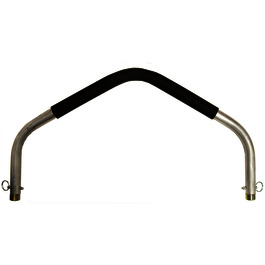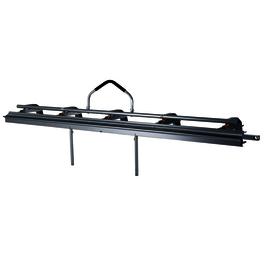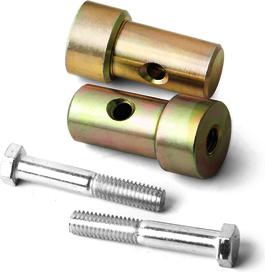Safety Tips
SCAFFOLDING SAFETY GUIDELINES
As Recommended by SCAFFOLDING, SHORING & FORMING INSTITUTE It shall be the responsibility of all employers and employees to read and comply with the following common sense guidelines which are designed to promote safety in the erecting and dismantling of scaffolds. These guidelines do not purport to be all-inclusive nor to supplant or replace other additional safety and precautionary measures to cover usual or unusual condition. Local, State, or Federal stature or regulations shall supersede these guidelines if there is a conflict and it is the responsibility of each employee to comply.
GENERAL GUIDELINES
- POST THESE SCAFFOLDING SAFETY GUIDELINDES in a conspicuous place and be sure that all persons who erect, dismantle or use scaffolding are aware of them.
- FOLLOW ALL STATE, LOCAL AND FEDERAL CODES, ORDINANCES AND REGULATIONS pertaining to scaffolding because they may be more restrictive. For example, height or width requirements may vary.
- SURVEY THE JOB SITE-A survey shall be made of the job site for hazards, such as untapped earth fills, ditches, debris, high tension wires, unguarded openings, and other hazardous conditions created by other trades. These conditions shall be corrected or avoided as noted in the following sections.
- INSPECT ALL EQUIPMENT BEFORE USING-Never uses any equipment that is damaged or defective in any way.
- KEEP ALL EQUIPMENT IN GOOD REPAIR. Avoid using rusted equipment-the strength of rusted equipment is not known.
- INSPECT ERECTED SCAFFOLDS DAILY-or at the beginning of every shift to be sure that they are maintained in safe condition.
- NEVER USE EQUIPEMENT FOR PURPOSES OR IN WAYS FOR WHICH IT WAS NOT INTENDED.
- REPORT ANY UNSAFE CONDITION. NEVER TAKE CHANCES-Do not work on scaffolds if your physical condition is such that you feel dizzy or unsteady in any way.
- WORKING UNDER THE INFLUENCE OF ALCOHOL OR ILLEGAL DRUGS IS STRICTLY PROHIBITED.
- CONSULT YOUR SCAFFOLD SUPPLIER-NEVER TAKE CHANCES-Consult manuals and instructions provided by the supplier.
GUIDELINES FOR ERECTION AND USE OF SCAFFOLDS
- PROVIDE ADEQUATE SILLS for scaffold posts and use base plates.
- USE ADJUSTING SCREWS instead of blocking to adjust to uneven grade conditions.
- PLUMB AND LEVEL ALL SCAFFOLDS as the erection proceeds. Do not force braced to fit-level the scaffold until proper fit can be made easily.
- BRACING. Each frame or panel shall be braced by horizontal bracing, cross bracing, diagonal bracing or any combination there of for securing vertical members together laterally. All brace connections shall be made secure, in accordance with manufacturers' recommendation.
- DO NOT CLIMB CROSS BRACES. An access (climbing) ladder, access steps, frame designed to be climbed or equivalent safe access to the scaffold shall be used
- TIE RUNNING SCAFFOLD TO WALL or structure when the height exceeds four (4) times the minimum scaffold base dimension. The first vertical and longitudinal tie shall be placed at this point. Vertical ties shall be repeated at intervals not greater than 26 feet. Longitudinal ties shall be placed at each end and at intervals not greater than 30 feet. Ties must prevent the scaffold from tipping into or away from the wall or structure.
- WHEN SCAFFOLDS ARE TO BE PARTIALLY OR FULLY ENCLOSED, specific precautions must be taken to assure frequency and adequacy of ties attaching the scaffolding to the building due to increased load conditions resulting from effects of wind and weather. The scaffolding components to which the ties are attached must also be checked for additional loads.
- WHEN FREE STANDING SCAFFOLD TOWERS exceed four (4) times their minimum base dimension vertically, they must be restrained from tipping.
- DO NOT ERECT SCAFFOLDS NEAR ELECTRICAL POWER LINES UNLESS PROPER PRECAUTIONS ARE TAKEN. Consult the power Service Company for advice.
- DO NOT USE ladders or makeshift devices on top of scaffolds to increase the height.
- DO NOT EXCEED MANUFATURERS' RECOMMENDED LOAD RATING.
- EQUIP AND MAINTAIN ALL PLATFORMS with proper guardrails, midrails, and toeboards along all open sides and ends of scaffold platforms
- ALL BRACKETS shall be seated correctly with side brackets parallel to the frames and end brackets at 90 degrees to the frames. Brackets shall not be bent or twisted from normal position. Brackets (except mobile brackets designed to carry materials) are to be used as work platforms only and shall be used for storage of materials or equipment. When brackets are used, the scaffold shall be tied to the structure or otherwise restrained to prevent tipping.
- ALL SCAFFOLDING ACCESSORIES shall be used and installed in accordance with the manufacturers' recommended procedure. Accessories shall not be altered in the field. Scaffolds, frames and their components of various manufacturers shall not be intermixed unless the components fit together without force and the scaffold's structural integrity is maintained by the user. Scaffold components manufactured by different manufacturers shall not be modified in order to intermix them unless a competent person determines the resulting scaffold is structurally sound.
- FOR PLANKING, THE FOLLOWING GUIDELINES APPLY:
- Use only lumber that is properly inspected and graded as scaffold plank.
- Planking shall have at least 12" of overlap and extend 6" beyond center of support, or, be cleated at both ends to prevent sliding off supports.
- Fabricated scaffold Planks and platforms unless cleated or restrained by hooks shall extend over their end supports not less than 6 inches nor more than 12 inches
- Secure planks to scaffold when necessary.
- FOR ROLLING SCAFFOLD THE FOLLOWING ADDITIONAL GUIDELINES APPLY:
- CASTERS WITH PLAIN STEMS shall be attached to the panel or adjustment screw by pins or other suitable means
- DO NOT EXTEND ADJUSTING SCREWS ON ROLLING SCAFFOLDS MORE THAN 12"
- WHEELS OR CASTERS shall be provided with a locking device and kept locked during erection and dismantling or any time scaffolds are not being moved.
- SECURE OR REMOVE ALL MATERIAL AND EQUIPMENT from platform before moving scaffold.
- USE HORIZONTAL DIAGONAL BRACING near the bottom and at 20-foot intervals measured from the rolling surface.
- DO NOT USE brackets or other platform extensions without consideration of overturning effect.
- THE HEIGHT OF A ROLLING SCAFFOLD excluding its uppermost guardrails, must not exceed four times its smallest base dimension unless it is stabilized by and engineered counterweight system or some other equivalent means.
- CLEAT OR SECURE ALL PLANKS.
- DO NOT ATTEMPT TO MOVE A ROLLING SCAFFOLD WITHOUT SUFFICIENT HELP-watch out for holes in floor and overhead obstructions-stabilize against tipping.
- DO NOT RIDE ROLLING SCAFFOLDS.
- JOINTS shall be restrained from separation.
- FOR "PUTLOGS" AND "TRUSSES" the following additional
guidelines apply:
- DO NOT CANTILEVER OR EXTEND PUTLOGS/TRUSSES as side brackets without thorough consideration for loads to be applied.
- PUTLOGS/TRUSSES SHOULD EXTEND AT LEAST 6" beyond point of support.
- PLACE PROPER BRACING BETWEEN PUTLOGS/TRUSSES when the span of putlog/truss is more than 12 feet.
- WHEN DISMANTLING SCAFFOLDING THE FOLLOWING ADDITIONAL GUIDELINES APPLY:
- CHECK TO SEE IF SCAFFOLDING HAS BEEN STRUCTURALLY ALTERED in any way which would make it unsafe, and if so, reconstruct where necessary before commencing with dismantling procedures.
- VISUALLY INSPECT PLANK prior to dismantling to be sure that they are safe to work on.
- COMPONENTS SHOULD BE LOWERED as soon as dismantled in safe manner so as to protect personnel below.
- DO NOT ACCUMULATE EXCESS COMPONENTS OR EQUIPMENT on the level being dismantled.
- DISMANTLED EQUIPMENT should be stockpiled in an orderly manner.
- FOLLOW ERECTION PROCEDURE AND USE MANUALS







